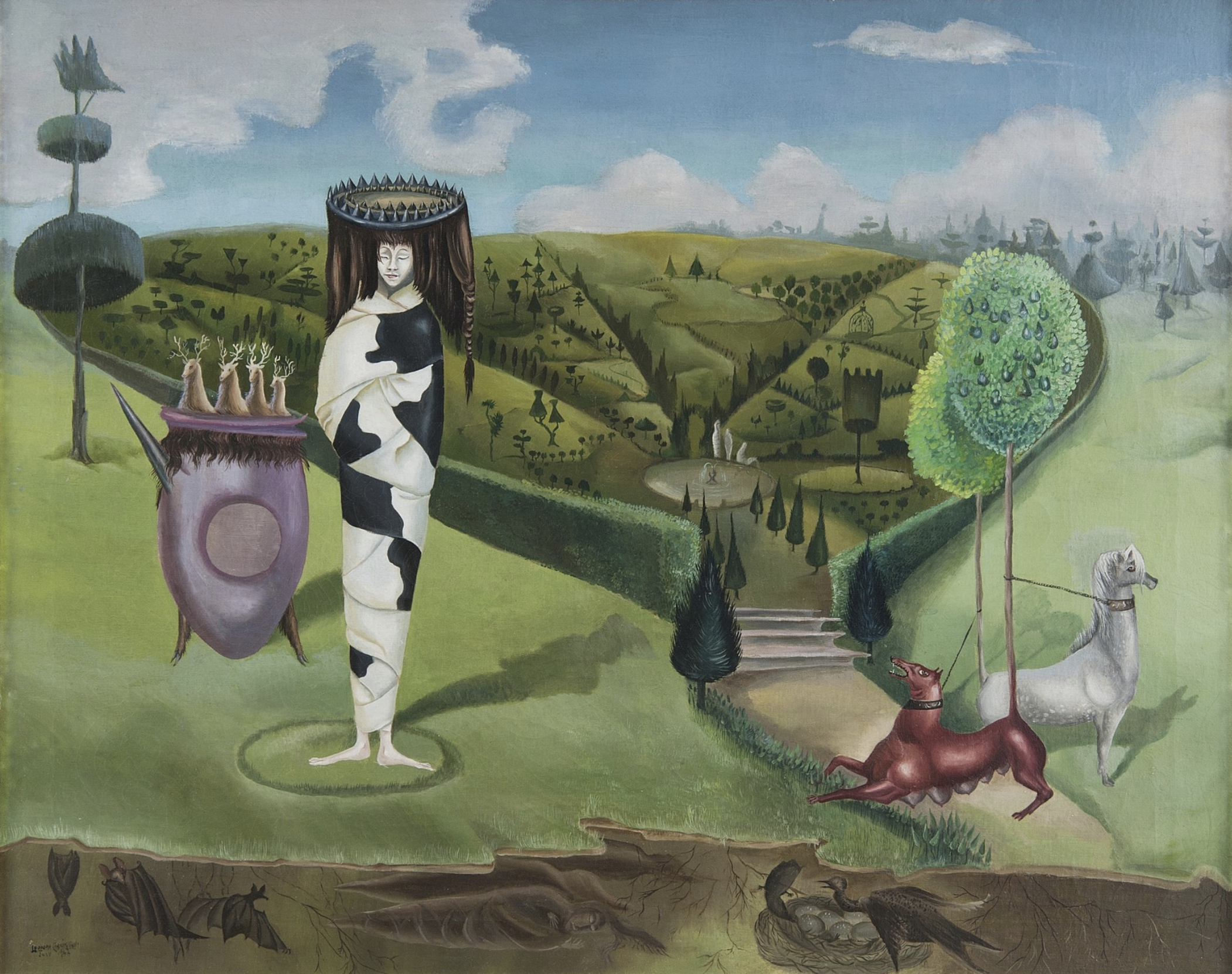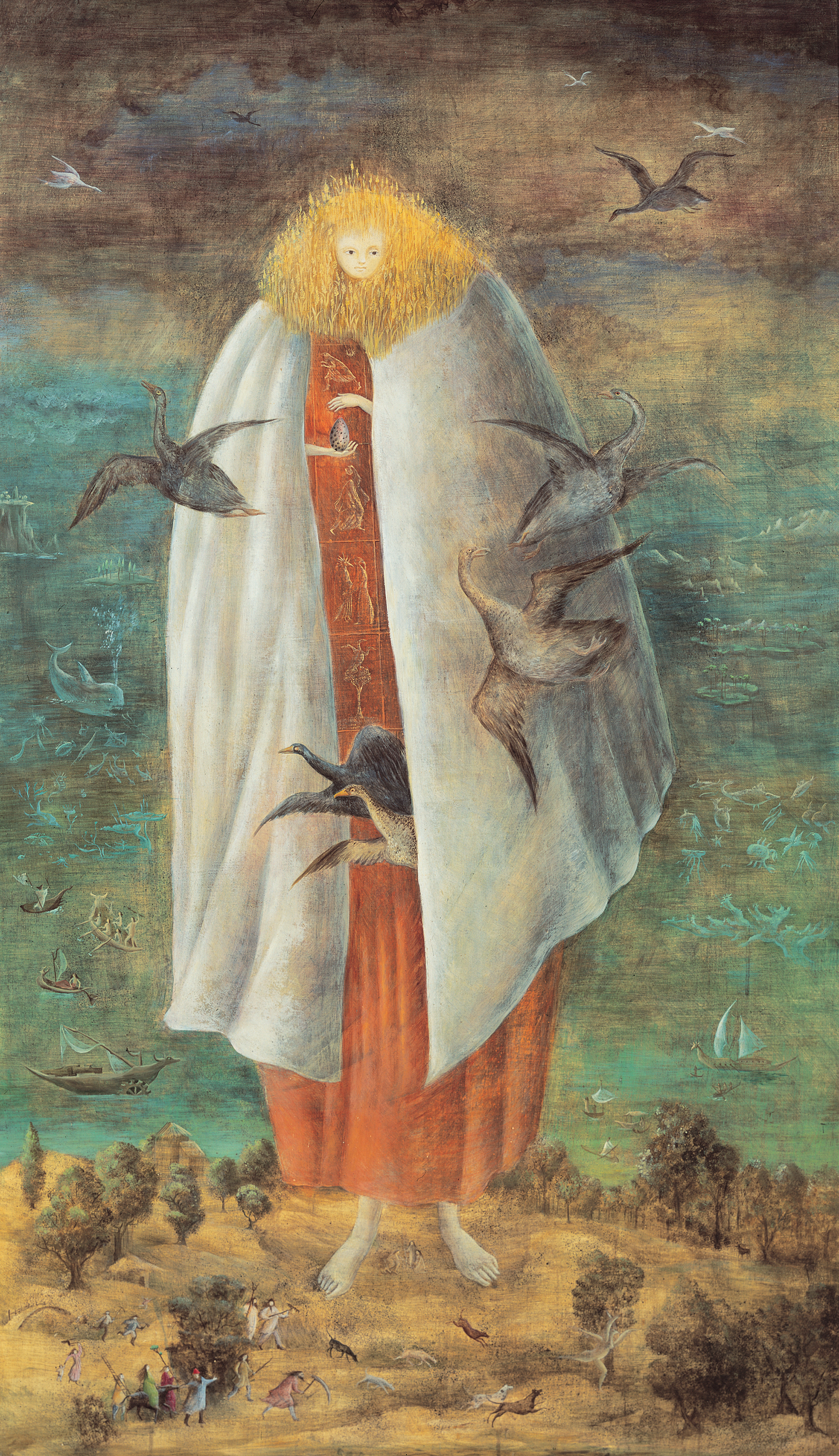Leonora Carrington, Artes 1101944. Collection of Pearl & Stan Goodman, lovede gave til NSU Art Museum, Fort Lauderdale, USA © Estate of Leonora Carrington / ViSDA
Instead she wrote about herself: “If I were my thoughts, it means I could be anything from noodle soup, a crocodile, a corpse, a leopard, or half a liter of beer. If I were my feelings, then I would be love, hate, irritation, boredom, happiness, pride, humility, pain, pleasure. If you were my body, then I am the fetus of a woman who changes every moment. However, I, like the whole world, desire an individual identity “.
When Leonora Carrington wrote these words it was 1970. After more than 50 years, the key figure of Surrealism, who rebelled against power against hierarchies and conventions through her magical universe populated by humor, spirits and witches, continues to enchant the public.
Fans of her magical universe will meet her until January 15th in Denmark, at the ARKEN Museum of Modern Art, about twenty kilometers south of Copenhagen, where the largest exhibition in Scandinavia dedicated to the British painter and writer, organized in collaboration with Fundacion MAPFRE of Madrid, has just opened.

Leonora Carrington, Green Tea (The Oval Lady), 1942. The Museum of Modern Art, New York. Gift from Drue Heinz Trust (exchange) 2019 © Estate of Leonora Carrington / VISDA. Unknown photographer
Over one hundred 100 works – including Carrington’s paintings, drawings, tapestries, sculptures and books, and works by artists such as Remedios Varo or Max Ernst – tell of an experimental artistic universe, rich in mythology, esotericism and feminist perspectives.
“Leonora Carrington’s artistic vision of freedom and equality – explains the curator of the exhibition Sarah Fredholm – is more relevant than ever in times of global warming, natural disasters and war. In response to the crises of our time, spirituality, the occult and the forces of nature are being cultivated more and more, for example through astrology, tarot and witchcraft. Carrington possessed incredible power and mystery. She remained unique, created her own version of Surrealism, and was not limited by either men or women. surrealist movement. As an artist, challenge our way of seeing the world “.

Leonora Carrington, The Giantess (The Guardian of the Egg), 1947. Private collection © Estate of Leonora Carrington / VISDA. Unknown photographer
Intransigent and visionary, Carrington has in fact placed his freedom above all else. Moving away from a rigid bourgeois education, she reached Paris at the age of twenty to pursue a career as an artist. Within the inner circle of the surrealist movement, she met the painter Max Ernst and had a relationship with him. She then she, during the Second World War, she in a war-torn Europe, she flees her to Mexico, where she settled dealing with Mexican culture and religion.
Now, during his stop in Denmark, on the occasion of his first major exhibition in Scandinavia, the public will be able to follow Carrington’s life and career with key works arriving from England, the United States and Mexico, flanked by letters , photographs and major loans from private collections.
The artist’s interest in magic, alchemy, witchcraft overwhelms visitors making their way through fantastic characters in a state of perpetual transformation, while the boundaries between humans, animals and nature become increasingly blurred. What attracts is an art steeped in memories, from involuntary engagement in a psychiatric hospital in Santander, Spain, to his exile during World War II. The themes of confinement and transformation are well expressed in the work Green Tea (The Oval Lady), created by Leonora one year after her hospitalization. Everything revolves around the two horses tied to each other’s tails, while, under the earth’s surface, some beings recall the female figure wrapped in the foreground, the painter herself.

Leonora Carrington, The Artist Traveling Incognito, 1949. Rowland Weinstein, Weinstein Gallery, San Francisco © Estate of Leonora Carrington / VISDA. Photo: © Nicholas Pishvanov
Through a visual language full of poetry, Leonora Carrington faces human psychology, its change and renewal, opening the way to magical realms where everything is out of the ordinary. Inhabited by strong women, mythological goddesses, historical female figures and wise women, Carrington’s art drags us into the history of the occult, of alchemy, making us aware of how women have had great authority in many indigenous cultures.
If female characters claim power, oracles and alchemists become creatures with healing and magical powers, with access to unknown territories, capable of summoning new worlds.
With her art, Carrington directs a feminist critique of oppressive power hierarchies, as seen, for example, in the self-portrait The Artist traveling Incognito. The work contrasts with the trend of the surrealist movement dominated by men who tend to worship the female figure as a young, beautiful muse with a boundless imagination, capable of inspiring the male artist.
“I didn’t have time to be anyone’s muse… I was too busy rebelling against my family and learning how to be an artist,” Carrington said in an interview, not very enthusiastic about the “muse” label.
After ARKEN, where it can be admired until January 15, the exhibition will reach the Fundación MAPFRE in Madrid.
![]() Read also:
Read also:
• In the dreamlike universe of Leonora Carrington, the surrealist of the 2022 Art Biennale

